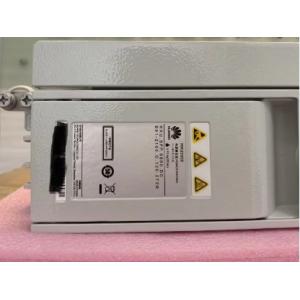About the RRU5304w
An RRU is a Remote Radio Unit (or Head). It is the radio-frequency
(RF) part of a cell site, performing signal modulation,
demodulation, processing, and amplification. The RRU is installed
near the antenna and connected to a baseband unit (BBU) via a fiber
optic cable. This configuration reduces signal loss and makes it
easier to upgrade equipment.
The RRU5304w model is an outdoor unit that supports multiple radio
access technologies (RATs) through its Software-Defined Radio (SDR)
technology, configurable via software.
Key specifications
Specific configurations of the RRU5304w exist for different
frequency bands and technologies.
Common configuration example (700 MHz band):
- RATs supported: LTE FDD, LTE NB-IoT, and NR FDD.
- Frequency band: 700 MHz (Band 28/n28).
- Configuration: 4 Transmit and 4 Receive (4T4R) channels.
- Maximum output power: 4 x 60 W.
- CPRI ports: Two Common Public Radio Interface (CPRI) ports for connecting to
the BBU, with data rates up to 9.8 Gbit/s.
- Power: -48 V DC input.
- Protection: IP65 rating, which means it is protected from total dust ingress
and low-pressure water jets from any direction.
What "GCS" signifies
Based on telecommunications vendor sourcing information, "GCS" is a
specific HW (Huawei) product code, likely 02312GCS. This
alphanumeric code corresponds to a specific hardware version or
configuration of the RRU5304w, which operates in the 2600 MHz band
with a 4T4R, 4 x 60W output.
Role in a network
The RRU5304w/GCS works with other equipment to form a complete base
station:
- RRU: The RRU5304w handles the radio signals near the antenna.
- BBU (Baseband Unit): Processes the baseband signals and controls the base station. It
is typically located in an equipment room and connected to the RRU
by fiber.
- Antenna: The RRU connects directly to the antenna, which transmits and
receives the wireless signals to and from users.
















